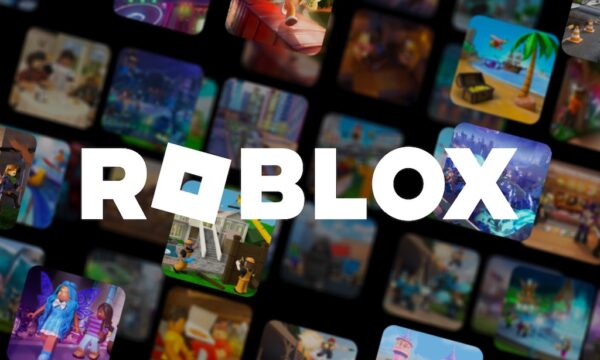Understanding meme coins: A psychological perspective

Blockchain technology furnishes a decentralised financial infrastructure that gives precedence to transparency and accessibility. By banishing central intermediaries, it enables peer-to-peer transactions that are recorded on immutable ledgers, instilling trust among participants, which can be individual users, nodes (i.e., computers), and organisations connected to the blockchain network. This structure reduces the risk of fraud and lowers barriers to entry for those who have been historically excluded from traditional financial systems.
Although meme coins rely on blockchain technology, they do not consistently illustrate its foundational values. Their primary appeal originates from social media influence, community-driven hype, and speculative trading rather than technological breakthrough or practical application. Dogecoin is the exception that proves the rule. While it began as a light-hearted project, its technical infrastructure mirrors meaningful aspects of blockchain philosophy, notably in terms of openness and user empowerment. Nevertheless, the Dogecoin price is shaped more by market psychology and conjectural dynamics rather than by its technical merits.
The emergence of meme coins underscores a unique convergence of financial innovation, digital culture, and behavioural dynamics. Despite the fact that they stem from humorous or unconventional beginnings, they have amassed considerable market value and ignited speculative interest. To understand the motivations behind investing in meme coins, it is critical to consider not only economic factors but also the psychological forces at play.
FUD (fear, uncertainty and doubt) and FOMO (fear of missing out)
Investing in meme coins demands caution, mental strength, and sufficient knowledge and experience to manage them. Ideally, investors in the cryptocurrency market should act rationally and logically, yet psychological factors make market conditions exceptional. The vast majority of meme coin holders are influenced by FUD (Fear, Uncertainty, and Doubt) and FOMO (Fear of Missing Out), which leads to spontaneous, emotionally driven, and poorly informed choices. They count on multiple channels to pinpoint trading opportunities, including but not limited to social media and influencers, news outlets, blogs, podcasts, and friends and family.
FUD involves the dissemination of negative, questionable, and or false information. When a person, especially an influential figure in the cryptocurrency space, expresses contrary opinions about an asset or a project, they inoculate fear and doubt, which can lead to decisions like panic selling, missing out on potential gains, and ultimately, financial losses. FOMO describes a situation where an investor is afraid of missing out on trends, leading them to follow what the cryptocurrency market desires constantly. Hence, they end up buying high, and when the meme coin eventually decreases in value, so do their profits.
Tribalism and digital identity
As humans, we are a social species, which means we are innately designed for connection, hinging on complex relationships and group living for survival, well-being, and thriving. Tribalism is a phenomenon present in meme coins. Dogecoin, for instance, has a strong, loyal community that is ideologically aligned with the meme coin, going so far as defending and advocating for it despite proof that other options might be better. Holders identify with the coin’s narrative and mascot (i.e., the Shiba Inu dog named Kabosu), forming close-knit groups that bear a resemblance to fandoms and subcultures.
Numerous investors view their participation as a cultural statement. To be more precise, acquiring these digital assets can indicate alignment with a particular online community, ethos, or worldview, and this sense of belonging and camaraderie makes them hold even during periods of volatility. Traders are not just participating with their cash. They are immersing themselves in a collective experience. The meme coin becomes a badge of identity, and its value is reinforced through market dynamics, collective belief, and social momentum.
Rebellion against traditional finance
The traditional finance landscape does not align naturally with younger generations, particularly Millennials, who have already experienced several recessions during the formative stages of their lives. For decades, financial institutions have preferred remaining obsolete to following innovation. Meme coin enthusiasts perceive them as a form of cultural rebellion against the established financial system. Value is derived from collective sentiment, social capital, and the viral nature of Internet culture, and this appeals to Gen Zers, who are more comfortable with digital trends and may be disillusioned with traditional economic structures.
Social proof and herd behaviour
When a meme coin is the subject of many posts on social media sites like X (formerly Twitter) or Reddit, people naturally assume it has value. In essence, the idea is that “if others are investing in it, it must be the right thing to do”. This is a classic case of social proof, a psychological phenomenon wherein people copy the actions of others, particularly in uncertain situations, in an attempt to conform to the correct behaviour. Investors worry they might miss out on an opportunity, which prompts impulsive buying without due diligence.
Much of the growth in the meme coin markets can be attributed to herd behaviour, a conscious decision to follow others and overlook private information. Herding can trigger the formation of speculative bubbles, meaning cryptocurrency prices inflate well beyond their intrinsic, fundamental, or utility-based value. Rational people start behaving irrationally by assuming the judgments of others while making decisions. Elon Musk’s tweets about Dogecoin, often playful or cryptic, have generated sudden and dramatic increases in price. Fans and followers believed Musk knew something they did not.
Concluding remarks
Understanding the psychological processes at work is the first step toward countering the power of meme coins. These digital assets do not necessarily thrive due to their technical merit, but because they tap deep into cognitive biases and emotional triggers that shape investor behaviour. When investors recognise that their decisions are being driven by FOMO, herd behaviour, or parasocial trust in influencers, they’re more likely to pause and reassess. Just as meme coins build tribes, so can critical thinking establish communities by empowering members to engage in meaningful dialogue and solve problems.
In conclusion, meme coins are not inherently good or bad. They are just tools fashioned by the intentions of their creators and the behaviour of their communities, and their impact depends on how they are used, understood, and regulated.
The editorial unit

























Facebook
Twitter
Instagram
YouTube
RSS